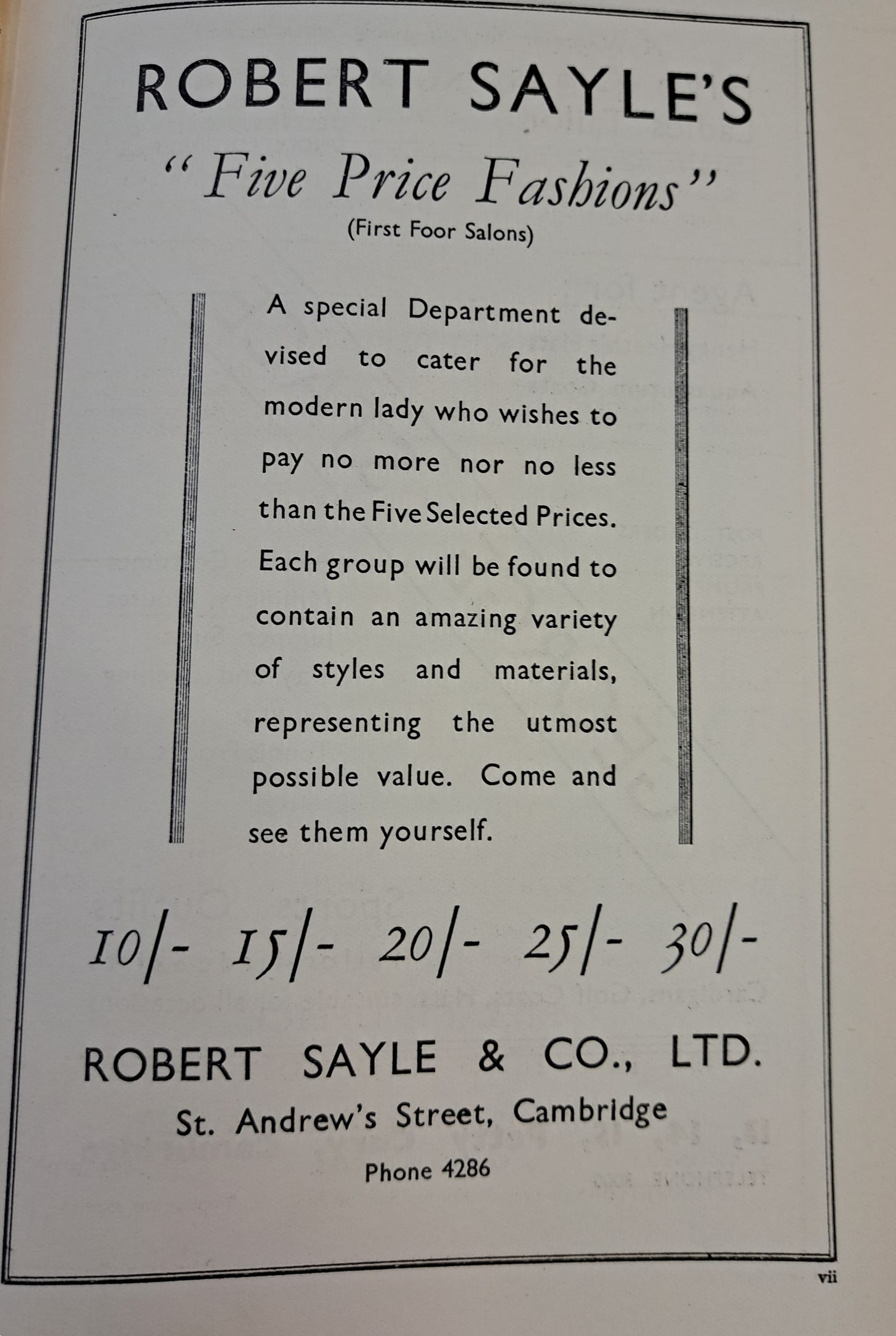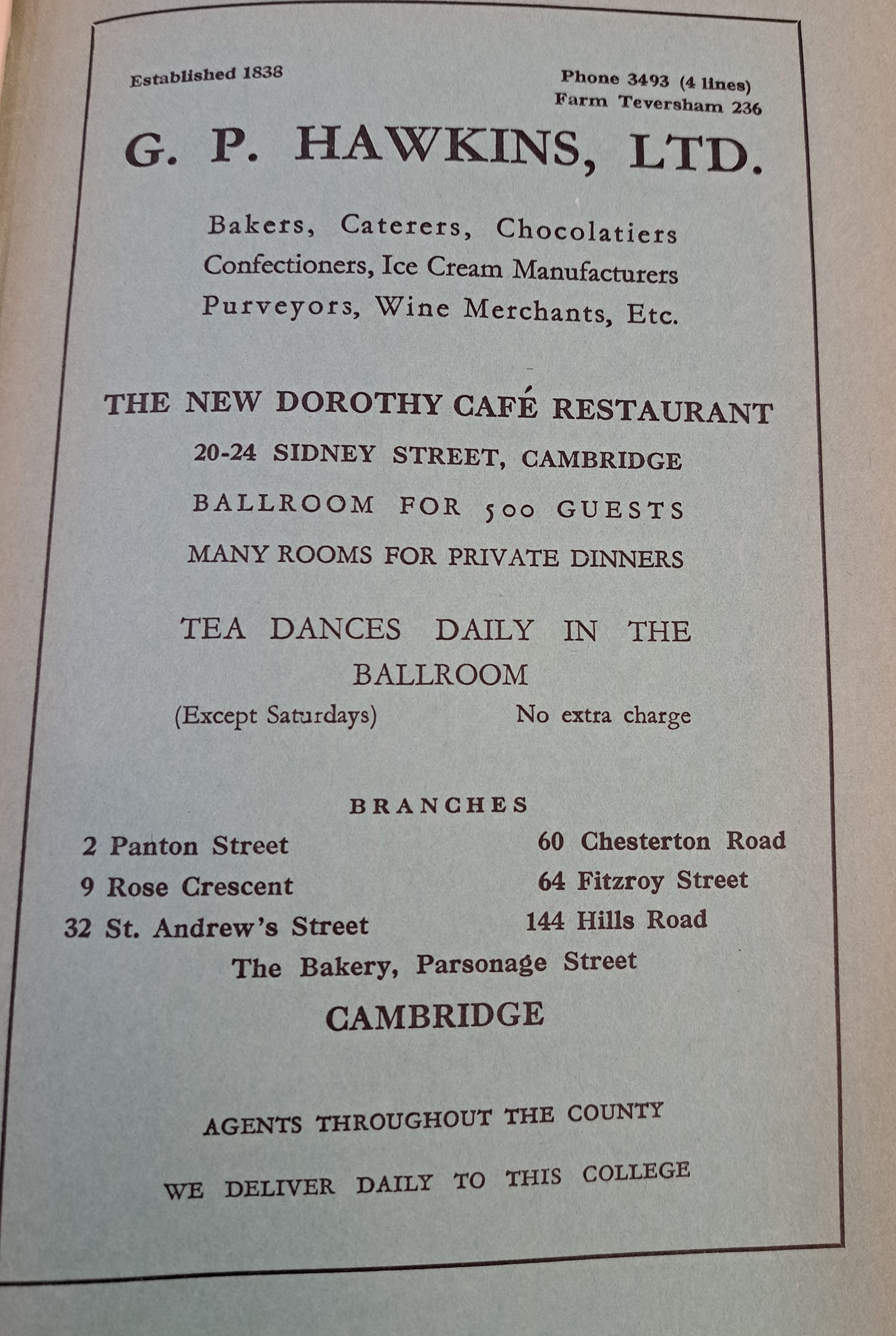
Within the red-brick towers and gables of Girton College in Cambridge, there is a treasure trove of an archive, full of diaries and letters from old students happy to share their memories of life in the University’s first women’s college. Founded in 1869 by Emily Davies and Barbara Bodichon, it took eighty years for Girton to be admitted as a full member of the University, and for its students to be granted degrees, but that did not deter thousands of women from applying to study there, attending the same lectures and taking the same examinations as the men. The College buildings as they now exist, quite some way from the centre of the City, were designed by Alfred Waterhouse and were funded by private donations.
Of course, the First World War had affected the students at Girton, as the men disappeared from the City; Barbara Wootton wrote in her memoir ‘what I chiefly remember from this period is accompanying mother to an endless succession of memorial services in college chapels or Cambridge churches.’ But this time the war was far closer to home, students across the country had to cope with evacuations, rationing, risks of bombs or gas, and the conscription of women as well as men. Much of this is chronicled in the notes left by a geography student who arrived in 1941, later Dr Joan Miller of Illinois State University, but there are also fascinating insights, and great cartoons, in the termly Girton Review, produced and edited, I think, by a combination of staff and students.
The outbreak of War in September 1939 had an immediate impact, as the start of term had to be delayed a week to allow time for blackouts to be put up. Six hundred corridor and common space windows were painted dark blue by the Fellows, and students were told to bring their own material for their bedrooms. Of course this gave the whole college a gloomy air, and made it cold when windows were opened to let fresh air and light in during the day. There were two thousand windows in all. Every night there had to be an external inspection to look for chinks of light: one Fellow and one student performed the patrol. The College was more crowded than usual as fifty-six students from Queen Mary’s London were evacuated to share premises. Ration books were handed to the Domestic Bursar who doled out butter, sugar and jam to the students in small plastic cartons. Coal was rationed to one bucket per room per week for the open fireplaces. There was heated water for baths, as long as the black line marking five inches was strictly observed.
Food was a major preoccupation, and most students felt hungry most of the time. Miller says that Sunday lunch consisted of potato soup, although one day some dark meat from ‘an animal with wings’ was served: the rumour went round that they were eating swan. ‘Wine was never around, though it was said that if you joined the Conservative Club they had wine. Fruits such as oranges, lemons, pineapples, grapefruit and bananas were only memories. If you had time to go to the market there might be soft fruits and medlars in season.’ (My friend Jane Steward, an expert on all things medlar, says this rather extraordinary fruit can be eaten in the winter when it becomes soft and sweet, perhaps like eating a date, and would have been very popular at a time of sugar rationing.) However the Girtonians were luckier than some: the College had extensive grounds, and they were given over to the production of fruit and vegetables. The Girton Review reports:
During August, three Land Girls received an intensive training in market gardening at Girton and there was plenty for them to learn. Last winter our cropping plans were modified to meet a probable war time now. Normally we grow only new potatoes…But last spring many more potatoes and roots were put in than usual, and some ‘Dutch Brown’ beans were procured from Holland to ‘grow on’ for seed. This bean, used dry like haricot, is valuable for its exceptionally high protein content and was much eaten on meatless days during the last War. An extra temporary garden boy and a beautifully wet summer have helped to produce record harvests of food crops in great variety. These include cabbages, savoys, broccoli, sprouting broccoli, cauliflower, Brussels Sprouts, curly kale, spring cabbage, spinach, peas, broad beans….
The list goes on, and the harvest included over a ton of damsons, of which half was sent down to the Cambridge canteens for evacuated children. The Fellows were also struggling to store six tons of apples. Those students who weren’t employed in gardening all had other tasks, including weekly fire-watching, manning the College stirrup pump, helping out at the City canteen or the First Aid centre. Degrees were shortened to two years unless the student was going into a reserved profession, such as medicine or teaching.
Clothing was a difficult issue, being rationed. ‘Make do and mend’ became the order of the day. Wendy Maskew had a small darning ‘snag’ hook and for a little donation would mend cotton lisle stockings. The Girton girls had to wear skirts, so stockings were a major problem: how they envied the girls from the London School of Economics, also now in Cambridge, who were allowed to wear trousers. Social life was limited - Girton was a long way out, so a two mile bicycle ride in the blackout and an 11pm curfew made hanging around in the City Centre unattractive. Batteries for bicycle lamps were hard to find. The holding of May Balls was suspended for the duration. However, the New Dorothy was still holding daily tea dances, as advertised in the Review:
Joan Miller had a particularly difficult time trying to pursue a standard geography syllabus during wartime. For a start, many of the academic staff had been seconded by the War Office to draw maps; so teaching was being managed by older professors brought out of retirement. Paper and pencils were hard to find, there was no film for cameras. The Ordnance Survey printers in Southampton was bombed, so maps were scarce. The wave tank in the Department basement was closed: years later Miller heard a rumour that a model of the Normandy beachhead was built there. Finally, wandering around in the countryside with maps and notebooks could get a girl into a great deal of trouble.
There were two particular entries in the Girton Review that fascinated me. I was interested in the girls who had matriculated in the autumn of 1939, and there on the list was an A P Pearce, reading history. A little bit of digging revealed that this was Philippa Pearce, one of my favourite children’s authors. Her prizewinning novels include the masterpiece, Tom’s Midnight Garden. Could this be her first published story?
And finally, let’s end on a truly upbeat note, a tribute to the generosity of the staff and students at Girton that went beyond damsons. The Review of Lent Term 1939 had the following announcement:
The Girton College Refugee Student fund has been set up by students and Fellows for the relief of a refugee student unable to continue her course of studies or even to live in Germany, Austria or Czechoslovakia because of the existing conditions there. Council has promised to contribute room and board, but donations are needed.
The next term announced that a scholarship had been offered to a Czech who would join in October. I tracked this across to the Register: the only girl who fitted that description was Katherine Sgalitzer, a refugee scholar studying Natural Sciences. Google is a wonderful thing: I found her. Dr Katya Osancova, born Kathe Sgalitzer, was ‘an outstanding Czech nutritional scientist’ who died in Prague in 2003. After finishing her degree at Girton she worked in the Medical Research Council’s Nutritional Laboratory. In 1943 she married an officer in the British and Czech Foreign Army: after the war they returned to Prague to help rebuild their country. Her parents had died in the concentration camps. The generosity of the Girton women preserved her from such a terrible fate.
The Girton Review’s Garden Report in October 1939 ended on a regretful note that vegetables were taking the place of flowers. But not everywhere:










This is a great evocation of Girton in WW2, Sarah, and your detective work is so impressive. I didn't know London's women students could wear trousers, while Cambridge's couldn't. So unfair, especially in wartime, for heaven's sake.
A lovely essay, Sarah. Thank you for all your wonderful research.